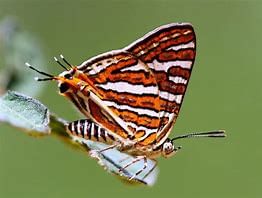UPSC Daily Current Affairs- 14th January 2024 | Current Affairs & Hindu Analysis: Daily, Weekly & Monthly PDF Download
GS-I
Cabo Verde
Subject: Geography

Why in News?
Recently, the World Health Organization (WHO) has certified Cabo Verde (also known as Cape Verde) as a malaria-free country.
About Cabo Verde:
- It is also known as Cape Verde which comprises a group of islands that lie off the west coast of Africa.
- It is located nearby Senegal and is the nearest point on the continent.
- This volcanic archipelago includes ten islands and five islets, divided into the windward (Barlavento) and leeward (Sotavento) groups.
- Climate: Generally moderate, the climate is characterized by stable temperatures with extreme aridity.
- The terrain of the Cabo Verde islands varies from the geologically older, flatter islands in the east and the newer, more mountainous islands in the west.
- Population: The overwhelming majority of the population of Cabo Verde is of mixed European and African descent and is often referred to as mestiço or Crioulo.
- Capital: Praia
- Languages spoken: Portuguese and Cape Verdean Creole
Key facts about Malaria
- It is a life-threatening disease caused by parasites that are transmitted to people through the bites of infected female Anopheles mosquitoes.
- There are 5 parasite species that cause malaria in humans, and 2 of these species, Plasmodium falciparum and Plasmodium vivax, pose the greatest threat.
- It is common in tropical areas where it’s hot and humid.
- Children under 5 years of age are the most vulnerable group affected by malaria.
- Symptoms: Fever and sweating,Chills Headache and muscle aches etc
- Treatment: It is preventable and curable. With early treatment, most people with malaria will make a full recovery.
Source: Indian Express
GS-II
A case diary for the Indian police
Subject: Governance

Why in News?
The article by R.K. Raghavan discusses the state of policing in India, focusing on a recent conference in Jaipur attended by high-ranking police officers. It highlights the challenges faced by the police in terms of public trust, federal-state relations, and the need for a more inclusive and technology-driven approach. Raghavan emphasizes the growing importance of law enforcement in the country while acknowledging the persistent issues that hinder the improvement of the police force’s image.
Key Highlights:
- The three-day conference in Jaipur centered around contemporary issues in Information Technology for the police.
- Prime Minister Narendra Modi’s interaction with police officers signals the increasing significance of law enforcement.
- Despite honest intentions, the police struggle to gain the trust of the majority, and the public’s perception remains negative.
- The article discusses the discord between the Centre and some Opposition-led States, especially regarding the Indian Police Service (IPS).
- The author points out the need for a balance between federal governance and state autonomy, particularly concerning the Enforcement Directorate (ED).
Key Challenges:
- Lack of public trust and a negative image of the police force.
- Growing discord between the Centre and Opposition-led States, especially regarding the IPS.
- Unequal attention and glory given to IPS officers, limiting opportunities for lower-ranking personnel.
- Politicization of the police force and the challenge of resisting illegal demands from grassroots politicians.
Key Terms/Phrases:
- Information Technology (IT)
- Director General of Police (DGP)
- Indian Police Service (IPS)
- Enforcement Directorate (ED)
- Federal Governance
- Grassroots Politicians
- Policing Hierarchy
Key Quotes:
- “The police have still to earn the trust and confidence of a majority of the populace.”
- “The ‘New Delhi-conceived and managed’ Indian Police Service (IPS) is perceived to be ‘a permanent irritant’ to some States.”
- “It is unfortunate that even seven decades after India’s Independence, citizens do not have a guardian organisation that will reach out to the poorest in the community.”
Key Statements:
- “The police force needs to balance federal governance and state autonomy to avoid conflicts.”
- “The negative public image of the police hinders effective law enforcement.”
- “There is a need for a major restructuring to bridge the gap between higher and lower ranks within the police force.”
Key Examples and References:
- Attacks on ED officers in some places in India pose a danger to relations between New Delhi and States.
- The article mentions the lack of attention given to the constabulary, as IPS officers tend to hog all the glory.
Key Facts/Data:
- The three-day conference in Jaipur took place in the first week of January.
- The article suggests that high unemployment rates in India drive many individuals to opt for a career in the police force.
- The negative public perception of the police force persists even after seven decades of India’s Independence.
Critical Analysis:
- The article acknowledges the positive shift towards technology adoption within the police force but raises concerns about the unequal distribution of attention and opportunities among ranks.
- The author highlights the persistent challenges in the relationship between the Centre and Opposition-led States, particularly in the context of federal policing.
Way Forward:
- The police force should focus on building trust through transparency and community engagement.
- There is a need for a restructuring that ensures opportunities for lower-ranking personnel to prove themselves.
- Policymakers should address the discord between the Centre and States to promote effective law enforcement.
Source: The Hindu
GS-III
Lentil Production
Subject: Economy

Why in News?
India is set to become the world’s largest producer of lentil (masoor) during the 2023-24 crop years on account of higher acreage.
About Lentil:
- It is a valuable human food, mostly consumed as dry seeds.
- In India, it’s mostly consumed as ‘Dal’ by removal of outer skin and separation of cotyledons.
- Lentil is also called as Masur and Malka (bold seeded).
- Climatic condition
- Lentil requires cold climate.
- It is very hardy and can tolerate frost and severe winter to a great extent.
- It requires cold temperature during its vegetative growth and warm temperature at the time of maturity.
- Temperature: The optimum temperature for growth is 18-30C. Its range of cultivation extends to an altitude of 3,500 m in north-west hills.
- Soil: Well drained, loam soils with neutral reaction are best for lentil cultivation. Acidic soils are not fit for growing lentil.
- It is widely cultivated throughout Europe, Asia, and North Africa.
- The Lentil growing states in India are Madhya Pradesh, Uttar Pradesh, Bihar, Chattisgarh, Haryana, Punjab, Maharashtra, Rajasthan, etc
- It is easy to cook and easily digestible with high biological value. Dry leaves, stems, empty and broken pods are used as valuable cattle feed.
- According to Food and Agriculture Organization (FAO), the world top lentil growers in 2022 were Canada, India, Australia, Turkey and Russia.
- Despite being the second largest producer of lentil, India has so far been importing mainly from Australia, Canada, Russia, Singapore, and Turkey.
- During the current year, it also imported some quantities of lentil from UAE, USA, Sri Lanka and Nepal.
Source: Indian Express
Thirty Meter Telescope (TMT)
Subject: Science and Technology

Why in News?
Recently, an official delegation from the Department of Science and Technology visited Mauna Kea to discuss “challenges” to the Thirty Meter Telescope (TMT) project.
About Thirty Meter Telescope (TMT):
- It has been conceived as a 30-metre diameter primary-mirror optical and infrared telescope that will enable observations into deep space.
- It is proposed as a joint collaboration involving institutions in the S., Japan, China, Canada, and India.
- It will be the world’s most advanced and capable ground-based optical, near-infrared, and mid-infrared observatory.
- It will integrate the latest innovations in precisions control, segmented mirror design, and adaptive optics.
- At the heart of the telescope is the segmented mirror, made up of 492 individual segments. Precisely aligned, these segments will work as a single reflective surface of 30m diameter.
- Location: Mauna Kea, an inactive volcano on the island of Hawai’i in the United States.
Indian contribution
- India expects to be a major contributor to the project and will provide;
- hardware (segment support assemblies, actuators, edge sensors, segment polishing, and segment coating), instrumentation (first light instruments),
- software (observatory software and telescope control systems) worth $200 million
- The Indian Institute of Astrophysics (IIAP) is leading the consortium of Indian institutions that are involved with the TMT project.
- India TMT will be jointly funded by the Departments of Science and Technology and Atomic Energy.
Source: The Hindu
Conjoined Silverline butterfly
Subject: Environment

Why in News?
Researchers from the National Centre for Biological Sciences (NCBS) found a new butterfly species in Karnataka’s Bramhagiri Wildlife Sanctuary, Kodagu.
About Conjoined Silverline butterfly:
- The butterfly species -- Conjoined Silverline (Cigaritis conjuncta) found from the Western Ghats biodiversity hotspot, India.
- Features
- The new butterfly is the size of a one rupee coin but is invaluable to conservationists.
- It is endemic to mid-elevation evergreen forests of the Western Ghats.
- It has fused spots and bands on the underside of wings, and shiny silver lines in the centre of those bands.
- The two sites where they have been located are at an elevation of 900 meters (Iruppu Falls) and 1,300 meters (Honey Valley).
- India houses more than 1,400 species of butterflies, but very few new ones have been discovered in the last few decades.
Key points about the Bramhagiri Wildlife Sanctuary
- It is situated in southern side in Kodagu district of Karnataka.
- It is named after the highest peak of the sanctuary is called Brahmagiri Hill.
- River: River Laxmantirtha, a very important tributary of river Cauvery originates in it.
- Vegetation: It is covered with semi evergreen to wet evergreen forests with high altitude grassland shoal forests.
- Flora: Rosewood, Nandi, Mathi, Honne, Sura Honne, White Cedar, Red Cedar and Saldhupa etc.
- Fauna: Tiger, Elephants, and Indian Gaur are the big mammals commonly found here.
Source: Indian Express
Himalayan Wolf Listed as ‘Vulnerable’ on IUCN Red List
Subject: Environment

Why in News?
The Himalayan Wolf (Canis lupus chanco), a distinct lupine species inhabiting the Himalayas, has recently been classified as ‘Vulnerable’ on the International Union for Conservation of Nature (IUCN)’s Red List.
- This classification highlights the urgent need for conservation efforts to protect this unique predator.
- Taxonomic Status: Long a subject of taxonomic ambiguity, the Himalayan Wolf has been confirmed as a genetically unique lineage of wolves.
- Population Estimate: The IUCN Red List estimates the population of mature individuals to be between 2,275 and 3,792, acknowledging the uncertainty of this figure.
- Geographical Range: The Himalayan Wolf is found across the Himalayan range of Nepal and India and extends across the Tibetan Plateau.
- Population in India: In the Indian Himalayas, the population is estimated to be between 227 and 378 mature individuals, primarily in Ladakh and the Spiti Valley of Himachal Pradesh, with potential small populations in Uttarakhand and Sikkim.
- Habitat Decline: The species faces a continuing decline in habitat quality and extent.
- Conflict with Livestock: Livestock depredation conflicts are significant, exacerbated by habitat modification and depletion of wild prey.
- Hybridization Threats: Increasing populations of feral dogs in regions like Ladakh and Spiti pose a threat of hybridization.
- Illegal Hunting: The Himalayan Wolf is hunted illegally for its fur and body parts, contributing to its declining numbers.
- Habitat and Prey Restoration: Securing and restoring healthy wild prey populations and landscapes, and establishing wildlife habitat refuges.
- Improved Livestock Management: Enhancing livestock guarding methods, including predator-proof corral pens, sustainable herding practices, and holistic management practices.
- Feral Dog Population Management: Addressing the growing challenge of feral dogs that threaten the Himalayan Wolf through hybridization.
- Trans-boundary Conservation Efforts: Collaborative efforts among range countries for research, monitoring, and conservation.
- Herding/Pasture Management: Improving practices in regions where wolves are heavily dependent on livestock, such as in Ladakh.
- Inclusion in Conservation Programs: Incorporating the Himalayan Wolf in conservation programs to promote public acceptance and reduce persecution.
Source: The Hindu
|
63 videos|5408 docs|1146 tests
|





















